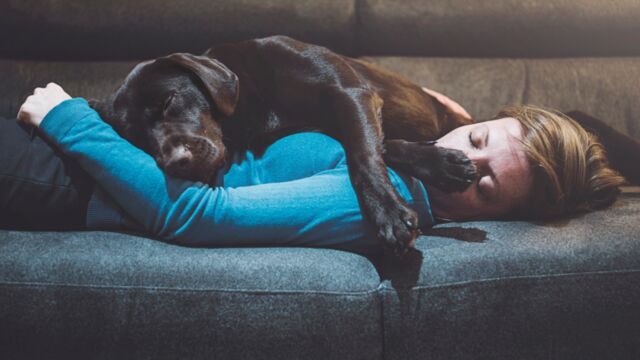Dogs are very loyal creatures. Admittedly, they can sometimes be quite mysterious in themselves and as humans, we don’t always understand what they do. Why, for example, does my dog always look at me when he is doing his business? Or, does my dog actually understand what I’m saying when he bows his head? And why does he always follow me to the bathroom? Well, we finally have the answer for you!
Discover our latest podcast
The answer is simple
The answer is actually quite simple. Dogs are pack animals and in their mind, you are a part of their pack. Check out the video above for more details about this. Here, we’re going to explain what you need to do to stop your dog following you to the bathroom so you can finally ‘go' in peace.
If you don’t want your dog to follow you to the bathroom or you don’t want to have to take them to the supermarket with you every time you go, you can always teach them to wait for you at the door instead. When they have mastered the most important and basic commands, this task, in particular, should be relatively easy for them to learn.
Every dog can learn to wait - no matter how old they are
First of all, it’s important to teach a dog to stay still - even, or especially, when it can no longer see its owner. The ‘stay’ command should be connected to the ‘sit' command. If your four-legged friend stays calm and relaxed, even when they can no longer see you, you should reward them.
Once this first step has been mastered, there are further steps you have to follow. Next, you should make them simply wait in front of the closed bathroom door. Don’t stay hidden behind the door for too long to start off with, but gradually extend this duration of time bit by bit.
For some dogs that have particularly strong protective instincts, it helps if they can briefly go into the bathroom before you go to the toilet. Once they have seen that there is, in fact, no danger in the bathroom, they can then wait for you outside the door and keep watch with more peace of mind.
Pay attention to your own behaviour during this training. Show them that it is quite normal for you to disappear into the bathroom for a short or long time and that there should be no cause for excitement or concern.
If your dog reacts by whining or scratching at the door while you are inside, when you come out, walk straight past them and ignore them completely. If you proceed to give them attention or fuss them, you will only be reinforcing this bad behaviour.
If the opposite happens however and your dog patiently waits for you by the door, you should, of course, give them praise and a treat. When this happens, you will be able to extend the time you are in the bathroom little by little, until it becomes natural and normal for your dog to wait for you by the door without the need for an incentive.















